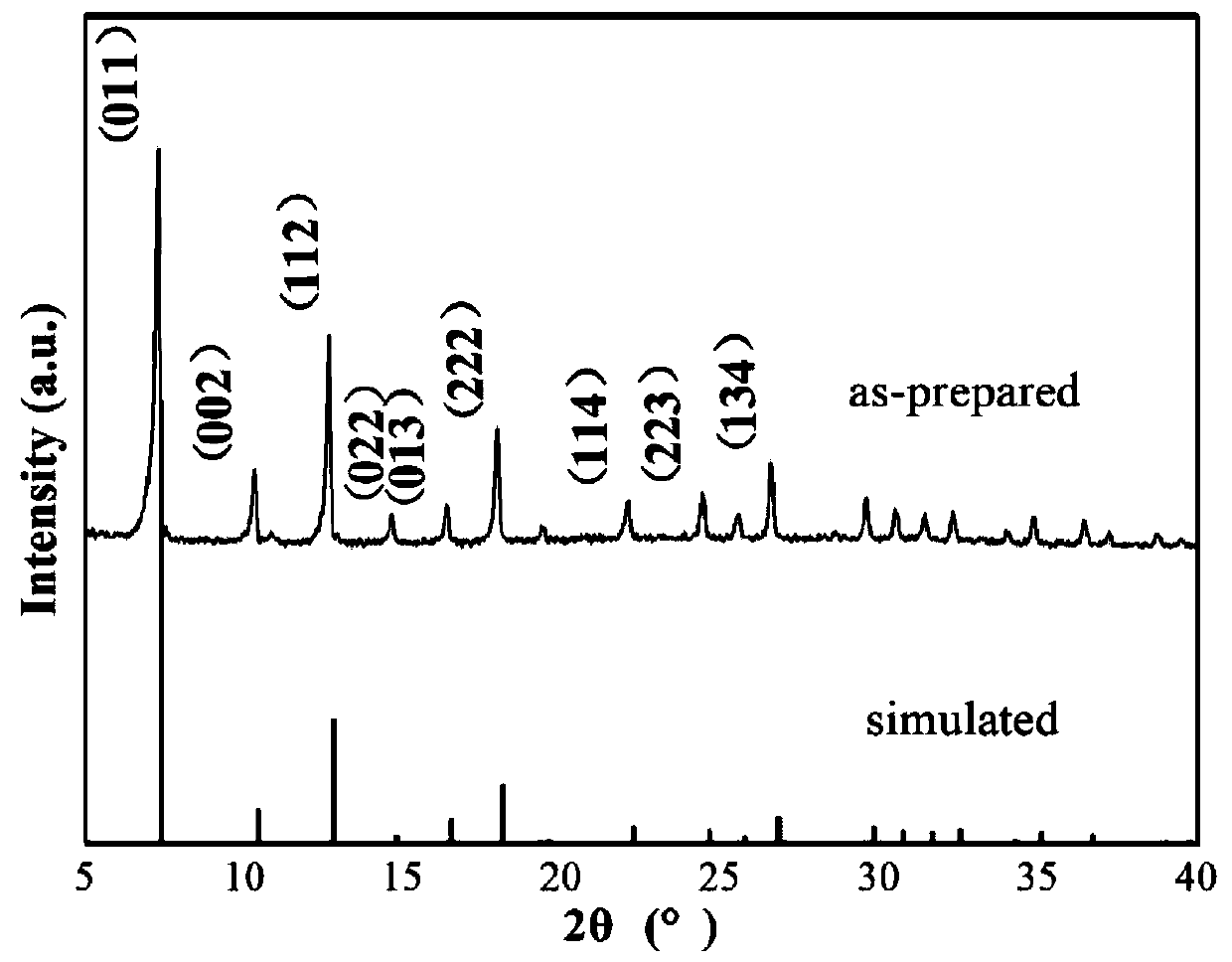Preparation of ZIF-67 catalyst and application thereof to degradation of antibiotics such as tetracycline
A technology of ZIF-67 and catalyst, which is applied in the field of pollutant degradation in wastewater and soil, can solve the problems of Fenton oxidation limitation and incomplete degradation, and achieve good catalytic degradation effect, no pollution, and simple operation
- Summary
- Abstract
- Description
- Claims
- Application Information
AI Technical Summary
Problems solved by technology
Method used
Image
Examples
Embodiment 1
[0032] Add Co(NO 3 ) 2 ·6H 2 O (291 mg) was dissolved in 15 mL of methanol, 2-methylimidazole (328 mg) was dissolved in 15 mL of methanol, and then the 2-methylimidazole solution was slowly dropped into Co(NO 3 ) 2 In the solution, after stirring and reacting for 6 hours at room temperature, it was left to age for 24 hours. Then it was centrifuged and washed several times with methanol, and dried at 70°C for 12 hours to obtain a purple powdery solid.
[0033] figure 1 For the XRD comparison figure of the ZIF-67 prepared in Example 1 and the simulated ZIF-67, it can be seen from the comparison figure that the technical scheme of the present invention has synthesized ZIF-67, wherein ZIF-67 and the simulated ZIF-67 are fit.
Embodiment 2
[0035] Utilize ZIF-67 prepared by the present invention to catalyze H 2 o 2 Application to generate hydroxyl radicals.
[0036] The ZIF-67 catalyst catalyzes H 2 o 2 The steps of generating hydroxyl radicals to degrade tetracycline are as follows:
[0037] Step 1: Tetracycline solution (2.25×10 -4 mol / L, 100mg / L) to take 20mL into a 50mL round bottom flask, add catalyst (0.2g / L) and stir for 10min.
[0038] Step 2: Test and record the peak absorption of the tetracycline solution at this time.
[0039] Step 3: Quickly join H 2 o 2 (4.5×10 -3 mol / L, 20eq), measure the peak shape of the UV-Vis absorption spectrum of organic pollutants with a UV-Vis photometer.
[0040] The mass of the ZIF-67 catalyst in the reaction system in step 1 was 4 mg.
[0041] figure 2 For the ZIF-67 catalytic H prepared by Example 2 of the present invention 2 o 2Hydroxyl free radicals are produced to degrade the UV-visible light absorption spectrum of tetracycline under optimal conditions. ...
Embodiment 3
[0043] Utilize ZIF-67 prepared by the present invention to catalyze H 2 o 2 Application to generate hydroxyl radicals.
[0044] The ZIF-67 catalyst catalyzes H 2 o 2 The steps of producing hydroxyl radicals to degrade oxytetracycline are as follows:
[0045] Step 1: Oxytetracycline solution (1.125×10 -4 mol / L, 50mg / L) to take 20mL into a 50mL round bottom flask, add catalyst (0.2g / L) and stir for 10min.
[0046] Step 2: Test and record the absorption peak of the oxytetracycline solution at this time.
[0047] Step 3: Quickly join H 2 o 2 (2.25×10 -3 mol / L, 20eq), measure the peak shape of the UV-Vis absorption spectrum of organic pollutants with a UV-Vis photometer.
[0048] The mass of the ZIF-67 catalyst in the reaction system in step 1 was 4 mg.
[0049] image 3 For the ZIF-67 catalytic H prepared by Example 3 of the present invention 2 o 2 Produce hydroxyl radicals to degrade oxytetracycline's UV-visible absorption spectrum under optimal conditions. The catal...
PUM
 Login to View More
Login to View More Abstract
Description
Claims
Application Information
 Login to View More
Login to View More - R&D
- Intellectual Property
- Life Sciences
- Materials
- Tech Scout
- Unparalleled Data Quality
- Higher Quality Content
- 60% Fewer Hallucinations
Browse by: Latest US Patents, China's latest patents, Technical Efficacy Thesaurus, Application Domain, Technology Topic, Popular Technical Reports.
© 2025 PatSnap. All rights reserved.Legal|Privacy policy|Modern Slavery Act Transparency Statement|Sitemap|About US| Contact US: help@patsnap.com



